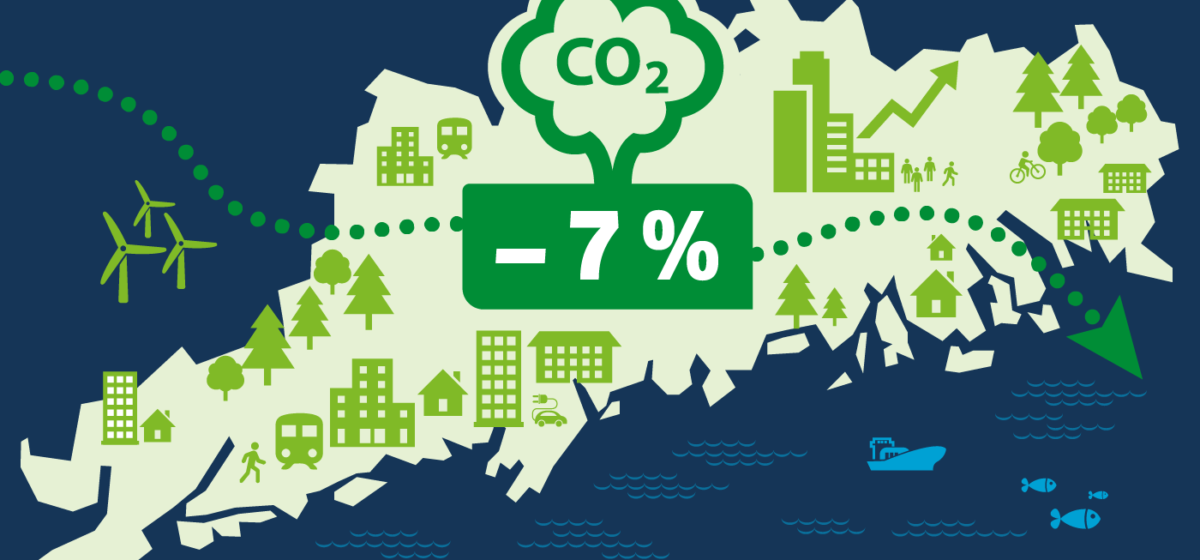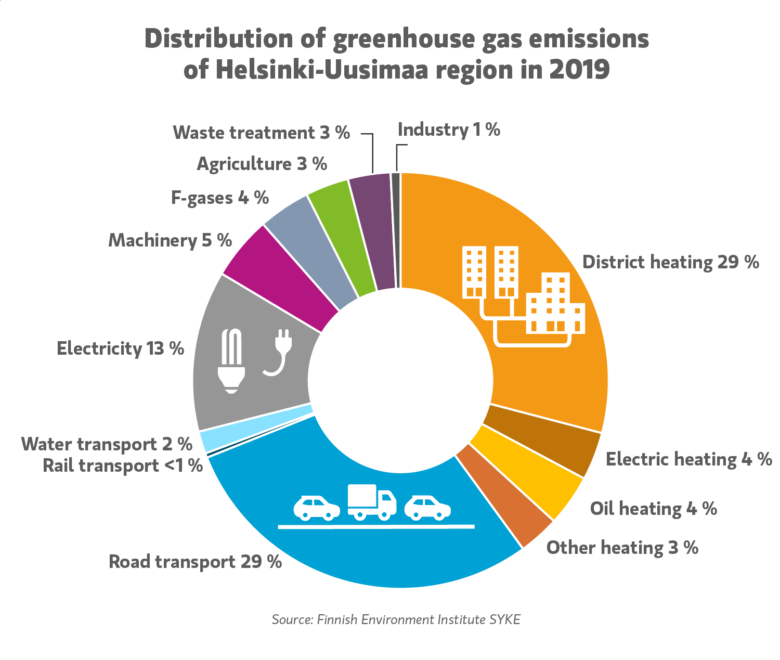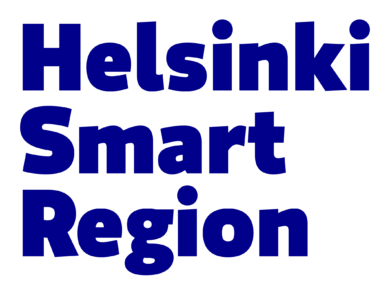News

Emissions in Helsinki-Uusimaa decreased by as much as 7 % in 2019 – next few years significant for climate work
Published:
According to a recent calculation by the Finnish Environment Institute (SYKE), municipal climate emissions in Helsinki-Uusimaa decreased by 7 % in 2019 compared to the previous year. The emissions in all Finnish municipalities decreased by a total of 5,5 %.
The biggest decrease occurred in the emissions from electricity usage, as the emissions from electricity production dropped significantly in Finland. The factors that have decreased municipal emissions include a cleaner electricity production as a result of an increased wind power generation, the replacement of oil heating by other methods of heating, and the reduced use of fossil fuels and peat in the generation of district heating.
– The clearly decreasing emissions is a very positive sign for the regional climate work. Decreasing the emissions from the district heating production in the capital region is the biggest challenge for us, but there are now new solution models for it. We are already working on this, says Ms Pia Tynys, Chief Adviser at the Helsinki-Uusimaa Regional Council.

Most emissions in Helsinki-Uusimaa from district heating and road transport
The largest emission sources in Helsinki-Uusimaa 2019 were still district heating and road transport, now both with a share of 29 %. The share of the electricity consumption (heating and other consumer electricity) is 17 %.
In road transports, the reasons for decreased emissions were the use of bio-components in traffic fuels, as well as the increased use of electric vehicles and a decrease in driving distances. Regionally, the emissions from road transports have decreased by 4 % since 2018, but the energy used in them only by 2 %.
– Furthermore, the road transport emissions still make a third of the municipal emissions, and this share is unfortunately only increasing, whereas other sectors gladly show some progress. We still need to find working solutions for reducing these traffic-related emissions, states Mr Simo Haanpää, Adviser at the Helsinki-Uusimaa Regional Council.
The city of Järvenpää kept its position as the municipality in the Helsinki-Uusimaa Region with the lowest emissions per capita (3,0 tCO2). Emissions in the municipalities also decreased considerably, by 15 %, with a significant impact of decreasing emissions from district heating. In the city of Hanko, the expanded usage of peat in the production of district heating led to a significant increase in its emissions.
In Helsinki-Uusimaa, the municipalities by the railway line are doing well in the comparison, but a positive development in emissions can be seen on a wide scale now. There is a considerable decrease in the regional emissions per capita, 8 % compared with the year before. The average regional emission per inhabitant is now 4,5 tCO2.

Decisions in near future ruling outcome of climate neutrality
– The direction of regional climate work depends on the decisions made upon investments and policies in the next years to come. Assemblies to be chosen in June will decide, whether Helsinki-Uusimaa can achieve climate neutrality by the year of 2035, Ms Tynys notes.
According to Ms Tynys, climate work is a no short-term expense, but a long-term retrenchment.
– It also enables green growth and can speed up new businesses. Also, the EU Green Deal Initiative along with the national recovery and resilience plan offer a strong support for a green transition, she continues.
Developing and updating emissions calculation with new data
The Finnish Environments Centre SYKE’s emissions calculation system ALas covers all Finnish municipalities and 80 emission sectors. The emissions and energy consumption are calculated annually for all municipalities and sectors. An update of the calculation model is made as necessary; for example, when based on newest available data. Some minor adjustments to improve accuracy has been made in the new model that was released this year. Additionally, in some sectors such as agriculture and industry, corrections were made to the source data.
A fully consumption-based emissions accounting method is being developed alongside usage-based accounting, and it will be ready by early 2022. This makes it possible to get accurate information about every municipality’s household consumption of power, goods and services, as well as investments and public administration consumption. The calculation process has also been automated to speed up the publication schedule in the future.
> Read Finnish Environment Institute’s press release about emissions calculation
The municipal emissions calculation system has received funding from the Life IP Canemure project of the European Union.
For more information, please contact:
Ms Pia Tynys, Chief Adviser/Climate Change, Helsinki-Uusimaa Regional Council, phone +358 40 149 2244
Mr Simo Haanpää, Adviser/Climate Change, Helsinki-Uusimaa Regional Council, phone +358 50 525 5706
Mr Santtu Karhinen, Senior Research Scientist, Finnish Environment Institute, phone +358 29 525 1889







 Return to listing
Return to listing